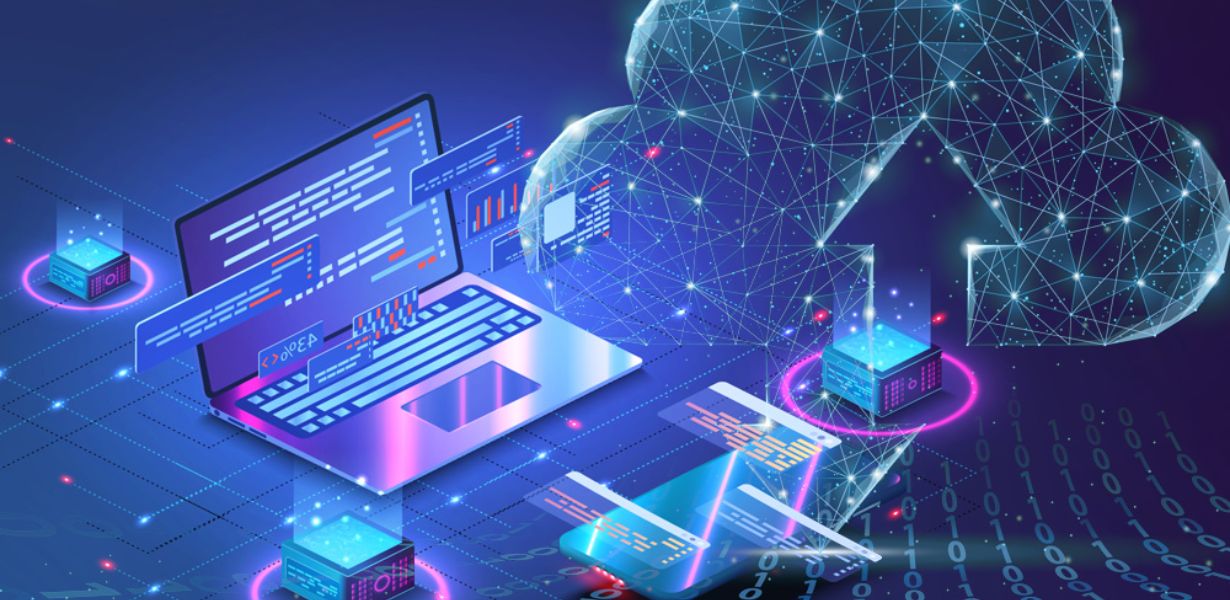
Beyond the Cloud: The Evolution of Edge Computing in SaaS Applications
- Post
- August 7, 2023
- Cloud Computing, Internet & Web Services, Software as a Service
- 0 Comments
In today’s digital landscape, the term “Software as a Service” (SaaS) has become ubiquitous. As businesses seek efficient and scalable solutions to their software needs, SaaS has risen as a beacon of convenience. However, the realm of technology never rests, and a new player has emerged: Edge Computing. This innovative paradigm shift is altering the way SaaS applications operate, transforming the cloud landscape. In this blog, we delve into the rise of edge computing in SaaS applications, exploring its implications and benefits for businesses.
Understanding Edge Computing in a SaaS Landscape
Edge Computing Defined
Edge computing, often coined as the “edge,” is an approach that brings computation and data storage closer to the source of data generation. Unlike traditional cloud computing that centralizes data processing in remote data centers, edge computing processes data locally, at the “edge” of the network. This shift in processing location brings numerous advantages to SaaS applications.
Enhancing Real-time Responsiveness
One of the fundamental advantages of edge computing in SaaS lies in its ability to significantly reduce latency. With processing happening closer to the user or device, data requests receive near-instantaneous responses. This is particularly crucial for applications demanding real-time interactions, such as video conferencing, online gaming, or IoT devices.
Mitigating Bandwidth Constraints
Edge computing helps alleviate bandwidth limitations by processing data locally. This is especially beneficial for applications that involve transmitting substantial amounts of data. Instead of burdening the network with extensive data transfers to the cloud, edge computing optimizes data usage and ensures smoother user experiences.
The Symbiosis: Edge Computing and SaaS Applications
Enhancing Privacy and Security
With data breaches and privacy concerns becoming more prevalent, businesses are prioritizing data security. Edge computing, by processing sensitive data locally, minimizes the exposure of critical information to the broader internet. This results in heightened privacy and reduces the attack surface, making SaaS applications more secure.
Unleashing Scalability
Scalability has always been a hallmark of SaaS applications, and edge computing augments this capability. By distributing computation across various edge nodes, applications can efficiently handle varying workloads without experiencing the bottlenecks often associated with central cloud infrastructure.
Challenges and Considerations
Fragmented Infrastructure Management
While edge computing offers compelling advantages, managing distributed infrastructure can be complex. Ensuring consistency, monitoring performance, and deploying updates across diverse edge nodes present challenges that businesses must address.
Integration with Cloud Services
To fully harness the power of edge computing, SaaS applications often need to seamlessly integrate with cloud services. This integration ensures that data collected and processed at the edge can be seamlessly transferred to the cloud for further analysis or storage.
The Future of SaaS: A Hybrid Ecosystem
The Hybrid Approach
The future of SaaS lies in a harmonious fusion of edge computing and cloud infrastructure. By utilizing both edge and cloud resources, businesses can strike a balance between real-time responsiveness and the scalability offered by cloud services.
Empowering Innovation
Edge computing opens the door to innovation by enabling applications that require minimal latency, such as augmented reality and virtual reality experiences. This empowerment of innovation drives businesses to create novel user experiences and applications that were previously unattainable.
Final Words
In a world where speed, security, and scalability are paramount, the marriage of edge computing with SaaS applications marks a revolutionary shift. Edge computing’s ability to enhance real-time responsiveness, mitigate bandwidth constraints, and fortify security makes it a pivotal player in the technology landscape. As businesses navigate the complex terrain of digital transformation, embracing the symbiosis between edge computing and SaaS applications could be the catalyst for unlocking a new era of efficiency and innovation.
Commonly Asked Questions
Q1: How does edge computing improve the user experience of SaaS applications?
Edge computing reduces latency, resulting in quicker response times for data requests and interactions, thereby enhancing the overall user experience.
Q2: Is edge computing suitable for all types of SaaS applications?
While edge computing benefits applications that require real-time interactions and lower latency, it might not be necessary for all types of SaaS applications. Consider the specific needs of your application before adopting edge computing.
Q3: What challenges can businesses encounter when implementing edge computing for SaaS?
Managing a distributed infrastructure, ensuring consistent performance, and integrating with cloud services are challenges businesses might face when implementing edge computing for SaaS applications.
Q4: Can edge computing replace cloud computing for SaaS applications?
Edge computing and cloud computing are not mutually exclusive; they can complement each other. Edge computing enhances real-time responsiveness, while cloud computing provides scalability and extensive processing power.
Q5: How can businesses prepare for the integration of edge computing in their SaaS applications?
Businesses should assess their application’s latency requirements, potential security implications, and integration needs before adopting edge computing. Collaborating with experts in the field can help formulate an effective integration strategy.




